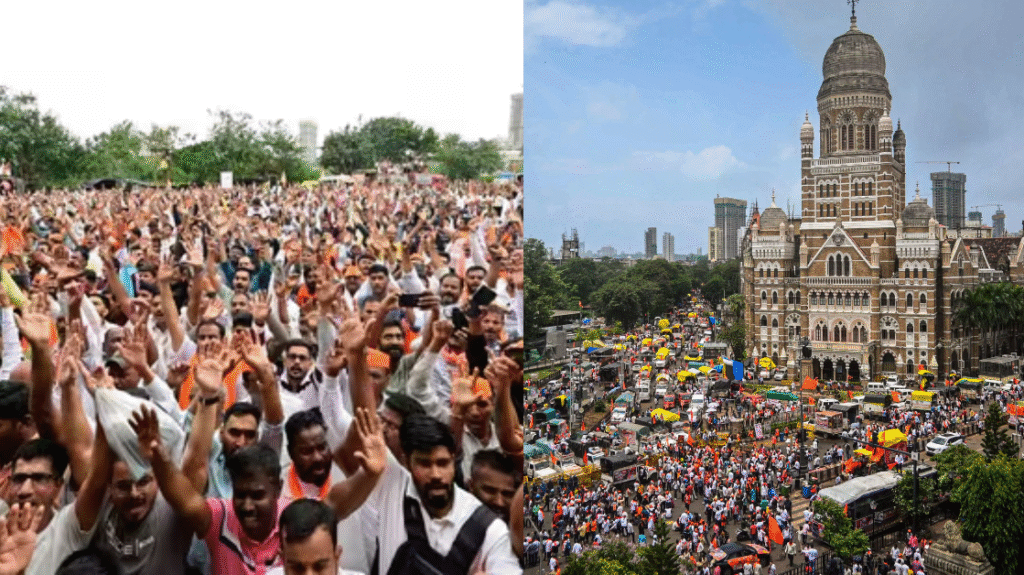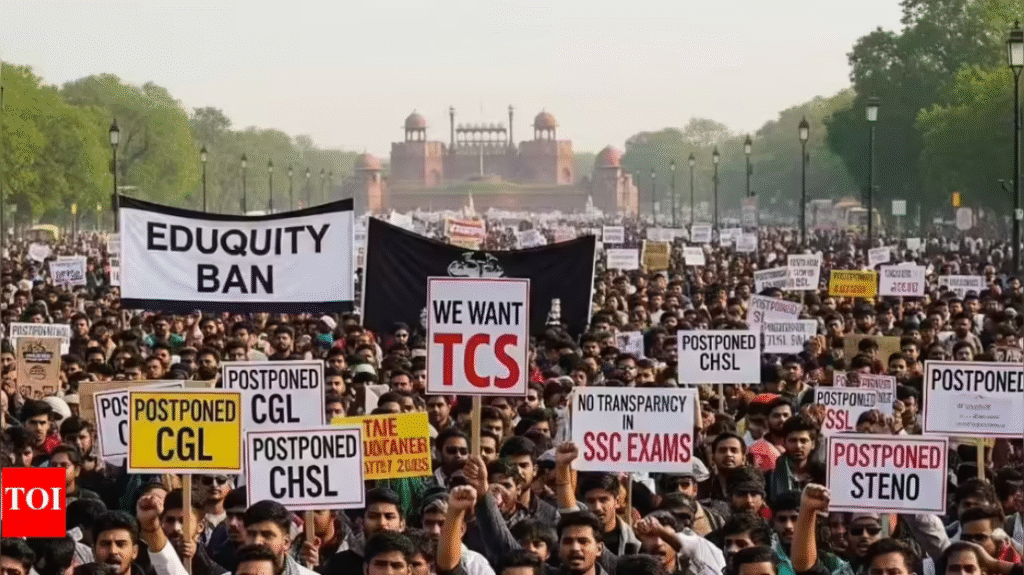The Maratha quota issue in Maharashtra has once again taken center stage, sparking massive protests, intense courtroom debates, and heated political arguments. For decades, the Maratha community has demanded reservations in education and government jobs, citing social and economic backwardness. The latest round of agitation, led by activist Manoj Jarange Patil, has pushed the state government and judiciary into the spotlight, making the quota debate one of the most significant social justice issues in India today.
Background: The Long Struggle for Maratha Quota
The demand for Maratha reservation is not new. As one of the largest and politically influential communities in Maharashtra, Marathas have long argued that despite their historical dominance, a significant portion of their population suffers from economic hardships.
The first major push for quota came in 2014, when the Maharashtra government announced a 16% reservation for Marathas in jobs and education. However, the Bombay High Court struck this down, citing violation of the 50% reservation ceiling set by the Supreme Court.
In 2018, following statewide silent morchas organized by the Maratha Kranti Morcha, the state legislature passed a new law granting 12% reservation in education and 13% in jobs. But in May 2021, the Supreme Court quashed the Maratha quota, ruling it unconstitutional and reaffirming the 50% cap on reservations.
This verdict reignited the agitation, as lakhs of Marathas felt their long-standing demand had been ignored.
The Latest Agitation: Manoj Jarange’s Protest
The latest chapter in the Maratha quota movement began on August 29, 2025, when activist Manoj Jarange Patil launched a hunger strike at Azad Maidan in Mumbai. His key demand was to include Marathas under the OBC (Other Backward Classes) category by using the Hyderabad Gazette — a historical document that classifies Marathas as Kunbis, who fall under the OBC list.
The agitation quickly gained momentum. Within days, protests spread across Mumbai and other cities, paralyzing business districts and forcing major companies to allow employees to work from home. Even iconic institutions like the Bombay Stock Exchange and the Cricket Club of India were affected as protesters attempted to enter their premises.
Jarange declared, “We have won,” after the government signaled agreement to key demands, but tensions remain high as the legal process is far from over.
The Legal Angle: High Court’s Stern Warnings
While the state government leaned toward accommodating the demands, the Bombay High Court raised serious concerns. The court warned the Maharashtra government against misusing the Hyderabad Gazette without proper verification, cautioning that any attempt to bypass established legal procedures could invite contempt proceedings.
The High Court’s intervention highlights the delicate balance between community aspirations and constitutional principles. Reservation is not merely a political tool; it is a legal framework governed by strict rules, precedents, and Supreme Court judgments.
Law experts argue that unless the OBC category is formally expanded or reviewed through a proper constitutional mechanism, granting Maratha quota by reclassification could open the floodgates for similar demands across India.
Political Reactions and Maneuvering
The Maratha quota agitation has become a political flashpoint. The ruling government in Maharashtra faces pressure from both the Maratha community and existing OBC groups, who fear dilution of their benefits.
Opposition parties have accused the government of playing vote-bank politics, while the ruling coalition insists it is committed to social justice. Manoj Jarange has emerged as a key figure, openly declaring that the Maratha community will use its political strength in upcoming elections if its demands are not met.
The quota issue has therefore moved beyond a social demand and into the realm of electoral strategy.
Social and Economic Impact of the Protests
Beyond politics, the agitation has had significant social and economic consequences. In Mumbai, traffic disruptions and business closures have hurt daily life. Educational institutions have faced uncertainty as student groups joined the protests.
Economists point out that prolonged unrest could harm Maharashtra’s investment climate, especially in Mumbai, India’s financial hub. On the other hand, supporters argue that providing Maratha quota will ensure more equitable distribution of opportunities in education and employment.
The agitation has also sparked debates within the OBC community. While some see common ground with the Marathas, others fear that adding Marathas to the OBC list could reduce their own chances in competitive exams and job applications.
Broader Implications for Reservation Politics in India
The Maratha quota case is not just about Maharashtra. It raises broader questions about India’s reservation system. Should the 50% cap on quotas remain untouched, or should it be revised to reflect changing demographics? How can governments balance social justice with merit and efficiency?
The Supreme Court’s earlier rulings suggest that any change would require a constitutional amendment. Until then, state governments will struggle to meet growing demands from powerful communities like the Marathas, Patidars in Gujarat, or Jats in Haryana.
Conclusion
The Maratha quota agitation is a reminder that reservation continues to shape India’s politics, law, and society in profound ways. While the immediate protest may have subsided after government assurances, the legal and political battle is far from over. For Maharashtra, the coming months will determine whether the Maratha community secures permanent inclusion in the OBC category or whether the matter once again ends up before the Supreme Court.
Either way, the Maratha quota debate is certain to influence the future of reservation policies in India.
To read more Indian Laws and news, visit Legal Guide India



